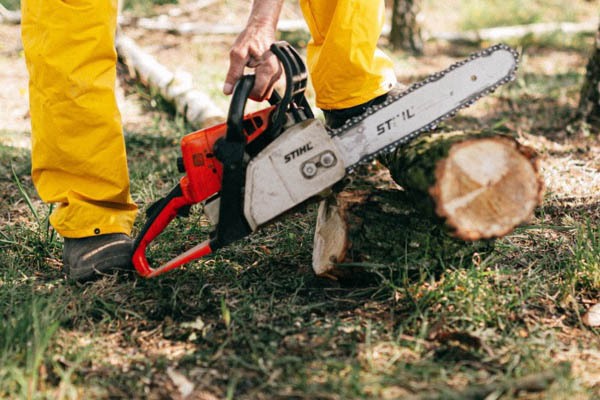How to Choose the Right Electric Saw for Your Needs
Selecting the perfect electric saw can be a daunting task, especially given the wide array of options available in today’s market.
Whether you’re a seasoned professional or an avid DIY enthusiast, making an informed decision is crucial to ensure that your projects are efficient, safe, and successful.
In this comprehensive guide, we will explore the key factors to consider when choosing the right electric saw to meet your specific needs.
Cutting-Edge Tips for Picking the Perfect Electric Saw to Suit Your Needs
1.) Type of Cut
One of the most critical factors to consider when selecting an electric saw is the type of cut you intend to make.
Electric saws come in various types, each meticulously designed to excel in specific cutting applications. These types include:
a. Circular Saw: This versatile tool is perfect for making straight cuts in materials such as wood, plywood, and even metal, making it a staple in construction and woodworking.
b. Jigsaw: For those intricate curved cuts and detailed patterns, a jigsaw is the go-to choice. It’s an excellent tool for creative woodworking and crafting projects.
c. Reciprocating Saw: Ideal for demolition work and rough cuts, the reciprocating saw is a powerhouse designed to tear through materials like wood, metal, and plastic with ease.
d. Miter Saw: If precision angle cuts are what you need, a miter saw is your best bet. Woodworkers and carpenters often rely on this tool for its accuracy and versatility.
e. Band Saw: When it comes to cutting irregular shapes and curves in materials like wood or metal, the band saw shines, offering unmatched flexibility in intricate cutting tasks.
Choosing the right type of saw that aligns with the specific cuts you’ll be making is paramount for achieving your project goals efficiently and effectively.
2.) Material
Another vital aspect to consider is the material you intend to cut. Electric saws are engineered to handle a diverse range of materials, including wood, metal, plastic, and more.
However, different materials may necessitate specialized blades or cutting techniques.
Be sure to select a saw that is not only compatible with the material you plan to work with but also optimized for it. This ensures both precision and safety in your cutting endeavors.
3.) Power Source
Electric saws can be broadly categorized into two main power source types: corded and cordless.
a. Corded Saw: These saws provide consistent power and are typically more potent, making them suitable for heavy-duty tasks. However, they require access to an electrical outlet.
b. Cordless Saw: Offering unmatched mobility and convenience, cordless saws are ideal for remote or outdoor projects. Nevertheless, they have limited run time and may be less powerful compared to their corded counterparts.
Selecting the power source that best aligns with your project’s requirements and location is essential. Corded saws are the workhorses of the workshop, while cordless options offer unparalleled versatility in the field.
4.) Blade Length
The blade length of your chosen saw is a critical determinant of the maximum depth of cut it can achieve.
To ensure efficiency and safety, it’s crucial to select a blade length that matches the thickness of the material you’ll be cutting.
Using a blade with inadequate length can lead to inefficient cutting, potential safety hazards, and subpar results.
Carefully evaluate your project’s needs to determine the appropriate blade length required.
5.) Safety Features
Safety should always be a top priority when working with electric saws. Look for saws that come equipped with essential safety features, which include:
a. Blade Guards: These protective mechanisms shield your hands and fingers from the spinning blade during operation, reducing the risk of accidents.
b. Anti-Kickback Features: Prevents the saw from jerking back towards the operator during use, enhancing control and safety.
c. Safety Switches: These switches require deliberate activation to prevent accidental starts, adding an extra layer of protection.
Investing in a saw with these safety features can significantly reduce the risk of accidents and injuries during operation, ensuring a safer working environment.
6.) Brand and Price
When it comes to purchasing an electric saw, consider both the brand reputation and the price of the tool.
Reputable brands often deliver better build quality, warranties, and exceptional customer support.
While staying within your budget is important, prioritize quality and safety over price. A reliable saw can serve you well for years, providing long-term value and peace of mind.
Conclusion
The process of choosing the right electric saw for your specific needs involves a careful evaluation of several key factors.
These factors encompass the type of cut, the material you’ll be working with, the power source, blade length, safety features, brand reputation, and price.
By meticulously considering these aspects, you can confidently select the ideal electric saw for your project, ensuring both efficiency and safety in your work.
Keep in mind that investing in the right tool is an investment in the success and quality of your projects, making your work more enjoyable and rewarding in the long run.

Don Kerr spent many years honing his skills as a DIY woodworker. He finds immense joy in not only creating remarkable pieces but also in generously sharing his knowledge. Connect with him via group.



